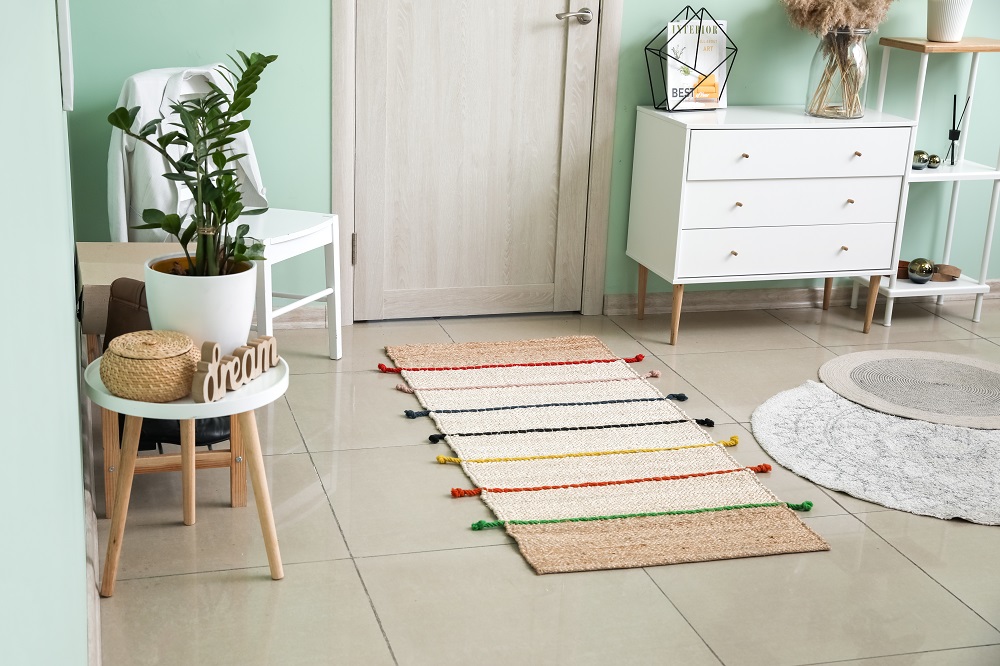Choosing the right material for runner rugs is important for busy homes. With frequent foot traffic, these rugs need to endure wear and tear while maintaining their appearance. Several materials are known for their high durability and ability to withstand daily use.
Wool and nylon are among the top choices for materials that offer both longevity and style. While there are many influences on the decision, each material has unique benefits that make it a good option for specific areas. For those seeking to update their space, custom options for runner rugs are available to suit various styles and functional preferences.
Nylon
Nylon is a popular choice for runner rugs due to its durability and resistance to wear. It is known for withstanding heavy foot traffic, making it ideal for high-traffic areas like hallways.
One of nylon’s key features is its resistance to abrasions and stains. This makes it a low-maintenance option for busy households. Thanks to a protective coating added by manufacturers, nylon rugs maintain their appearance even with frequent use.
Another benefit of nylon is its quick-drying ability. This makes it suitable for areas prone to moisture, such as bathrooms or kitchens. Additionally, nylon is elastic, allowing it to handle pressure from furniture without losing shape.
Wool
Wool is a popular material for high-durability runner rugs. Known for its strength, it is often chosen for areas with heavy foot traffic. Wool can withstand wear and tear, making it a long-lasting option for homes.
In addition to durability, wool is naturally stain-resistant. This quality helps maintain the rug’s appearance even in busy areas. Wool also offers a soft texture, adding comfort to any space.
Wool rugs are hypoallergenic, meaning they are beneficial for people with allergies. This is because wool fibers trap dust and allergens, preventing them from circulating in the air. This feature can help create a healthier environment indoors.
3. Polypropylene
Polypropylene is a popular choice for runner rugs due to its durability. It is a synthetic fiber known for its ability to withstand heavy foot traffic. This makes it ideal for busy areas in the home.
One significant advantage of polypropylene is its stain resistance. Spills are easy to clean, and the material resists absorbing liquids. This feature is perfect for homes with children or pets.
Polypropylene rugs are also budget-friendly. They offer a practical option without sacrificing quality. Their color retention properties mean they won’t fade easily, maintaining a fresh appearance longer.
Overall, polypropylene is a practical material choice for high-durability runner rugs, providing balance between cost and resilience.
4. Polyester
Polyester is a popular choice for runner rugs due to its balance of comfort and practicality. The fibers are soft underfoot, making it pleasant to walk on. This material is similar to other synthetic options like polypropylene but is often softer and more lightweight.
A key benefit of polyester is its resistance to stains and moisture. This makes it a practical option for areas with high foot traffic and spills. It’s also easier to clean, requiring minimal maintenance to keep it looking fresh.
While polyester offers many advantages, it may not be as durable as some natural materials. Over time, the pile on polyester rugs can flatten, which might require occasional fluffing or adjustment. Despite this, its combination of features makes it a suitable choice for many homes, especially those looking for affordability and comfort.
5. Acrylic
Acrylic is a man-made fiber that is often used in rugs. It looks and feels similar to wool, giving it a warm and cozy appearance. This quality makes it a popular choice for runner rugs.
One advantage of acrylic rugs is that they are typically less expensive than natural materials like wool. This can make them a budget-friendly option for many homes.
Acrylic is also resistant to mold and mildew, which is great for areas with moisture. This feature makes acrylic rugs durable and ideal for spaces prone to spills or humidity.
Conclusion
When choosing high-durability runner rugs, materials like wool and sisal stand out. Wool offers natural durability, softness, and resistance to dirt and water, making it ideal for busy areas in the home. Sisal, derived from the agave plant, provides a unique texture and is excellent for both indoor and outdoor settings.
For those interested in synthetic options, nylon rugs are notable for their durability and longevity. Each material brings its own benefits, so consider the specific needs of the space when selecting a runner rug.

